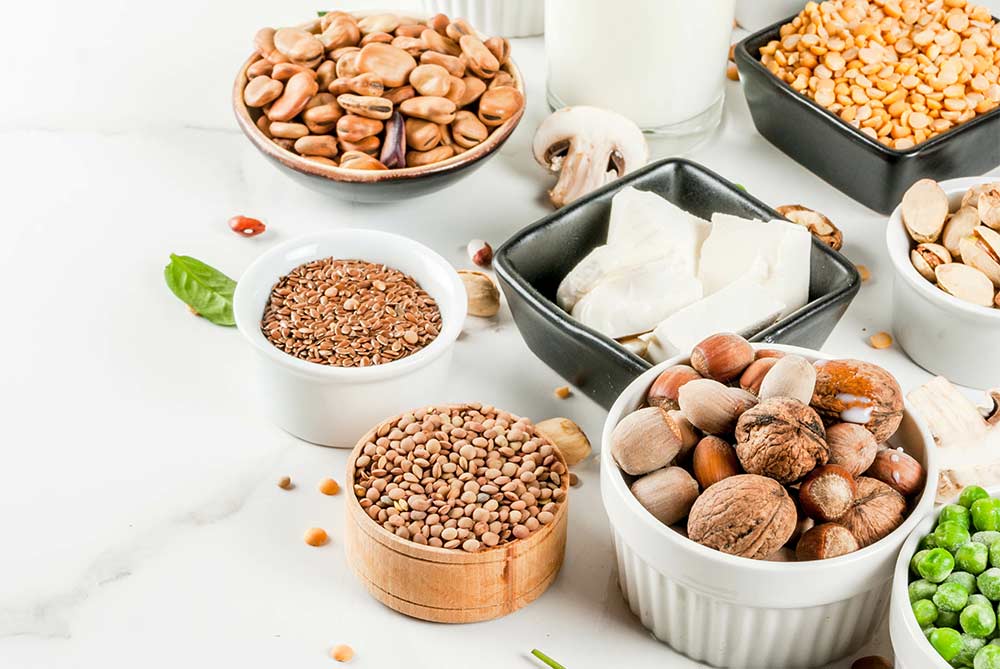Uncategorized
Eggs and cholesterol: Where do we stand?
Eggs have long been a staple food in different parts of the world, and are not only considered an economical and nutritious source of protein, but also a high source of cholesterol.

Proteins are made up of chains of amino acids, which are commonly referred to as building blocks since the body has the ability to make proteins from them. To do so, it requires amino acids and calories from the diet. Of the 20 amino acids involved in protein synthesis, only 9 are considered essential because they are not produced endogenously and must therefore be obtained from the diet. Energy intake is also an important factor. You must consume sufficient calories for the ingested protein to be used for synthesis and for degradation of body protein to be prevented.6
Protein is a macronutrient. Like fat and carbohydrates, it is a source of calories (4 kcal per gram of protein) although it should not be used primarily for energy purposes. Proteins are known to be used for muscle synthesis. More broadly, they are necessary for the growth and maintenance of tissues, such as skin, membranes, muscles, organs, bones, etc. But there are many different proteins, each with a particular function in the body. Some modulate a range of physiological functions by acting as enzymes or hormones (e.g. insulin involved in glucose uptake), some have transport or storage functions (e.g. the protein ferritin involved in iron storage), some are involved in the immune system, and the list goes on.6,7
In the context of weight management, it is also interesting to note that dietary protein increases satiety through various pathways more so than carbohydrates and fat.7,8,9
Governments and international organisations have set minimum recommended daily allowances for protein, which vary slightly from region to region:
In addition, some experts suggest that older people and those on a vegetarian or vegan diet should consume more protein than the levels recommended for the general population.7,16 Other situations may warrant a higher protein intake, for example in individuals who exercise with the aim to increase or maintain muscle mass,17 or patients with specific conditions (e.g. trauma, severe burn injury) in which the breakdown of body proteins is increased.6
With regard to excess protein, there is currently insufficient evidence to set a maximum daily protein intake from food. The available findings are conflicting, including in the context of prevention and management of pre-diabetes and type 2 diabetes. Some large-scale studies have reported an association between high protein intake (from animal sources in most cases) and a higher prevalence and risk of developing prediabetes and type 2 diabetes,7 while others argue that increasing protein intake could be beneficial in reducing this risk.18
Animal proteins are considered to be high-quality since they contain all essential amino acids in sufficient amounts. With the exception of soy, plant protein sources generally lack one or more essential amino acids, often called limiting amino acids.
When you think of protein, you probably think of meat and poultry. This is a common notion which, although true, is very limiting. There are a range of foods that can provide significant amounts of protein in your diet, among which we can mention: meat and organ meats, poultry (e.g. chicken, turkey) and eggs, fish and seafood, dairy products, soy products (e.g. tofu, tempeh), legumes (e.g. alfalfa, beans, peas, lentils), nuts and seeds, and butters made from nuts and seeds (e.g. peanut butter, tahini), whole grains, processed meat substitutes (often made of soy, beans, lentils, etc.), and some edible algae (e.g. nori, spirulina).12,19
Innovation is also driving us towards the consumption of laboratory-grown meat and insects which, although culturally accepted in some parts of the world, may seem repellent to Western consumers.2,20
It is important to keep in mind that animal proteins are considered to be high-quality since they contain all essential amino acids in sufficient amounts. With the exception of soy, plant protein sources generally lack one or more essential amino acids, often called limiting amino acids.4,6

It is therefore advised to consume different ‘families’ of plant sources at the same meal to ensure a balanced intake of essential amino acids. For example, you could combine black beans and rice in a chili, tacos with a chickpea filling, or lentils and walnuts in a salad. This is particularly relevant for those following a vegan diet, where all animal sources (including eggs and dairy products) are removed from the diet.4,6
In addition to tables showing the nutrition composition of foods, nutrition claims are an effective way to help consumers make better choices. As with other nutrition claims, products bearing a claim referring to protein content must meet conditions set by the legislation applicable in the territory where they are sold, the major one being the minimum protein content.
For the claim ‘source of protein’, at least 12% of the energy value of the food must be provided by protein in the EU, whereas at least 10% of the nutrient reference value (NRV) for protein must be provided per 100 g of product (or 5% of the NRV per 100 ml) according to the Codex Alimentarius (FAO/WHOa), in Japan and in the PRC. Note that NRVs vary from one legislation to another (e.g. 81 g in Japan, 60 g in the PRC). And for the claim ‘high protein‘, at least 20% of the energy value of the food must be provided by protein in the EU, or at least 20% of the NRV for protein must be provided per 100 g (10% of the NRV per 100 ml) in Japan and the PRC.21,22,23,24
To ensure the utmost inclusivity and international harmonisation, Monde Selection has upheld the strictest conditions for its Nutrition Labels, namely:
Protein is an essential nutrient that has a range of functions, including the synthesis and maintenance of tissues such as muscles. Recommended intakes do not vary much between genders in healthy adults, however, it may be justified to increase them in certain situations (e.g. exercise, illness, the elderly). A diversified diet, with or without animal products, can provide adequate amounts of protein. In the case of a plant-based diet, some advice may be useful, such as looking for products fortified with specific micronutrients (e.g. iron, vitamin B12) or natural sources of these micronutrients, and pairing different food sources of protein (e.g. legumes, whole grains, nuts and seeds) to achieve a balanced intake of the 9 essential amino acids. More practically, existing and emerging nutrition policies such as nutrition information panels, nutrition claims and front-of-pack labels can guide consumers towards specific foods, such as protein-rich foods, and encourage healthier diets.
Last update: September 2021
More articles